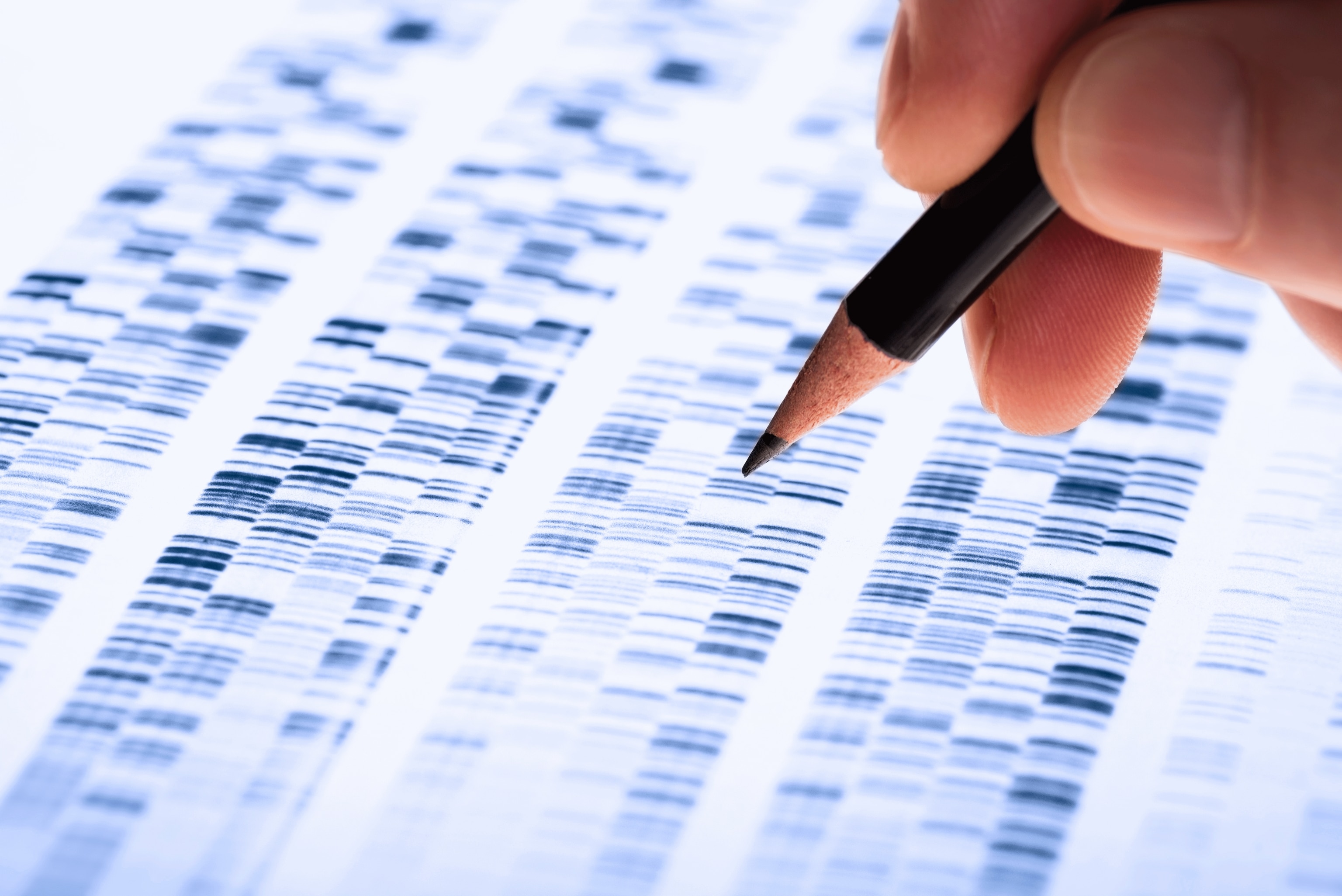“The Holy Grail in health care has long been personalized medicine, or what is now called precision medicine,” says Kemal Malik, member of the Bayer board of management responsible for innovation. “But getting to the level of precision we wanted wasn’t possible until now. What’s changed is our ability to sequence the human genome.” In April 2003, the Human Genome Project announced that it had sequenced around 20,000 genes of those that make up the blueprint of our bodies. For 15 years, this medical breakthrough has been informing and transforming health care. Genomics, the study of genes, is making it possible to predict, diagnose, and treat diseases more precisely and personally than ever.
A complete human genome contains three billion base pairs of DNA, uniquely arranged to give us our fundamental anatomy and individual characteristics such as height and hair color. DNA forms genes and understanding their function gives crucial insights into how our bodies work and what happens when we get sick. This was the reasoning behind the 13 years and $2.7 billion spent on the Human Genome Project. The world has quickly built on its achievements and now we can map a human genome in just a few hours and for less than a thousand dollars. Fast, large-scale, low-cost DNA sequencing has propelled genomics into mainstream medicine, driving a revolutionary shift toward precision medicine.
Early diagnosis of a disease can significantly increase the chances of successful treatment, and genomics can detect a disease long before symptoms present themselves. Many diseases, including cancers, are caused by alterations in our genes. Genomics can identify these alterations and search for them using an ever-growing number of genetic tests, many available online. If your results suggest susceptibility to a condition, you may be able to take preemptive action to delay or even stop the disease developing. “Health care will move more toward prevention rather than cure,” Malik says, and genomics will likely prove an important enabler in understanding the particular healthcare steps an individual should or should not take.
When symptoms do develop, genomics can be instrumental in diagnosing the problem. The Human Genome Project has fueled the discovery of nearly 2,000 disease genes, and these are proving highly effective at providing fast and accurate analysis. They have been especially valuable for identifying rare genetic diseases that had previously taken years to diagnose, ending the uncertainty and suffering of “diagnostic odysseys.” Ongoing research is committed to building databases of genetic biomarkers, especially for cancers. “To date, genomics has had the most impact on cancer,” Malik explains, “because we can get tissue, sequence it, and identify the alterations.” In the United States, the Cancer Genome Atlas has mapped the key genomic changes in more than 30 types of cancer. Such databases could deliver a definitive diagnosis in seconds, and even recommend targeted treatments based on the DNA of both the patient and the disease. Indeed, genetic sequencing of cancer tumors is helping not only to identify particular cancers but also to understand what causes them and what could kill them.
When it comes to treatment, genomics is driving another important element of precision medicine—pharmacogenomics. “We’ve long known that the same medication in the same dose affects people differently,” Malik says. Now we know why: Our genes influence the production of crucial enzymes in the liver that metabolize medicines. If a genetic variation stops the enzymes from working properly, the drug can build up in the body with serious side effects. Other drugs only work when broken down in the liver, so if the enzymes don’t work, neither does the drug. Such gene variations, known as polymorphisms, are common, but genomics means we can test for them and compensate for them. Gene variations mean that around 30 percent of people cannot fully convert a commonly used anti-clotting drug, but gene testing means alternative drugs can be taken to the same effect.
There are more than 250 drugs labeled with pharmacogenomic information, enabling them to be prescribed based on a patient’s genetics. As the number grows, and as DNA sequencing becomes standard, it’s likely that medicines will be routinely prescribed based on our genes—minimizing harmful side effects and making treatments faster and more effective. “Genomics is even changing the way we develop drugs,” Malik says. “It’s much more sophisticated because we can find a specific alteration that is causing a disease and try to target a medicine specifically to that alteration.” In 2014 eight out of the 41 new drugs approved by the FDA were targeted therapies. “Traditionally, health care’s approach has been a bit general,” Malik says. “Now we can look at a disease on a personal level.”
Nowhere is this more palpable than in the emerging field of gene editing, a technique that sees scientists change the DNA of living organisms. “Seldom does medicine really get to cure people,” Malik says. “But if the underlying problem is a particular gene alteration and we can snip that alteration out, then we’ve shifted from treating to curing.” A key technology behind gene editing is CRISPR-Cas9. Based on a defense mechanism found in bacteria, the Cas9 enzyme, described by Malik as “molecular scissors,” is delivered to a precise segment of malfunctioning DNA, cuts it out, and replaces it with good DNA created in the lab. Already in clinical trials, gene editing is becoming a fast, effective, and increasingly affordable treatment. “This is the ultimate precision medicine,” he says. “It has huge potential.”
In the 15 years since sequencing the first human genome, medicine has been quick to put its learnings into action. Genomics is providing us with a human instruction manual that is showing us how to fix ourselves. “In the future we’ll see every cancer patient sequenced, and we’ll develop specific drugs to target their particular genetic alteration,” Malik suggests. With DNA sequencing heading below the $100 mark, by 2025 as many as two billion genomes could have been sequenced. “We’re moving very, very rapidly,” he says. Genomics is putting the patient rather than the disease at the heart of health care, with a shift from treatments to cures. “It’s revolutionizing people’s ideas not just of health care,” Malik says, “but of illness itself.”
We asked some big questions about living a better life. Discover more about how we can overcome the world’s biggest challenges at natgeo.com/questionsforabetterlife









